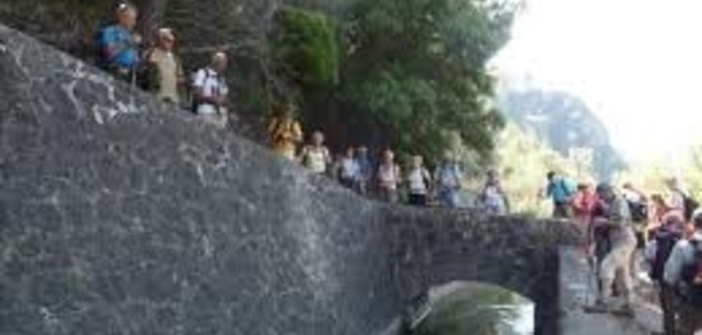Saint Cézaire is located at an altitude of 475 meters, while the Siagne flows through its gorges 300 meters below. The village was fortified in the 14th century at the request of the Count of Provence, and it had three access gates.
These fortifications spared Saint Cézaire from pillaging, looting, raids, and especially the great plague of 1350. The oldest house, the Vignes bastide, dates from the 12th century. The nine wells, including the one dedicated to the Virgin Mary from the 15th century, the most significant in Provence, narrow streets, a washhouse, mills, and dwellings dating from the 15th century set the scene for this village with its old stone houses.
Saint Cézaire is located at the boundary of the Alpes-Maritimes and Var departments. Julius Caesar would certainly not have made Napoleon I’s error in Russia; he was concerned with the logistics and supply of his legions. In 49 BC, he built a granary in Saint Cézaire, as the village was on the route to Fréjus, an inland route to protect against pirates terrorizing the coasts.
The primary activity is agriculture, notably vineyards and olive trees, and fishing takes place in the Siagne. The name Saint Cézaire first appeared in 1101 with the mention of the ecclesia de Sancto Césario. At the same time, the bishopric of Antibes succeeded the abbey of Lérins and built the Romanesque-style Notre Dame de Sardaigne.
Until the 18th century, it served as the parish church, where one can admire a Roman sarcophagus. This building, the size of a chapel, proved too small, and in 1720 a church was built in the village; Notre Dame de Sardaigne became the chapel of the penitents. The new church was larger and, importantly, closer to the residences, and it is dedicated to Saint Cézaire, becoming the village parish.
Other chapels have enlivened or once enlivened religious life: Saint Saturnin, Saint Ferréol at the two entrances to Saint Cézaire, and two others: Saint Blaise and La Miséricorde, now private properties. The fief belonged to the Villeneuve Flayosc family and was then shared with the Grasse family.
In the 18th century, the additional families of Cresp, the marquisate of Montauroux, and Thorame Théas appeared. After the death of the last lord in 1819 (a Cresp), the seigneurial castle became the town hall. Antoine Cresp was ennobled by Louis XV in 1718.
In 1868, taking advantage of the digging of the Siagne canal, Dr. Maure, then the mayor of the town, took the opportunity to bring water to Saint Cézaire and built the mule fountain. Two bridges span the Siagne, one from the Roman era and a second from the medieval era with a humpback shape. The caves discovered by Léon Dozol in 1890 attract many visitors to Saint Cézaire.
Thierry Jan


